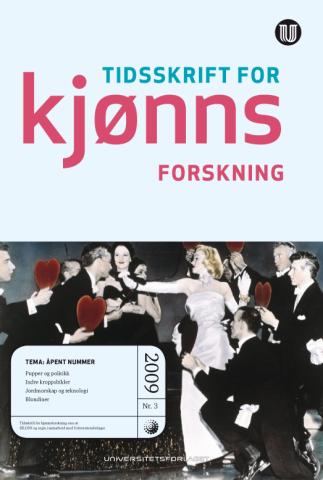Open issue

Articles
Gry Cathrin Brandser:
Tits and politics. Natural history and the taxonomic ordering of (sex)difference in the visible space of the table
The question of why males have breasts plagued naturalists in the eighteenth century in their effort to order the elements of the world into a table of relationships, and is the vantage point for this exploration of fruitful connections between an archaeological and a feminist approach to the history of science. Attention is devoted to Michel Foucault’s and Londa Schiebinger’s approaches to eighteenth-century natural history, particularly to the role played by Carl von Linné in introducing a zoological nomenclature and a new system of animal classification.
Whereas Foucault tries to identify the epistemic conditions of possibility for the desire to classify evident in the discourse of natural history (and Linné’s taxonomy), Schiebinger attempts to genealogically trace deep-seated cultural as well as immediate gender political concerns in the eighteenth-century society that informed Linné’s choice of the gender-charged term Mammalia, meaning literally "of the breast". It is argued that the controversy over the male breast’s taxonomic status illustrates the silencing and marginalization that Foucault argues any dominant discourse must undertake in order to establish and maintain its illusion of necessity or truth. In its obscurity, it can thus challenge the feminist discourse, which under the rule of a genderdichotomous order perhaps denies a world of (gender ambiguous) things any concrete reference.
Keywords: Carl von Linné, taxonomy, natural history, mammals, the female breast
Merete Lie:
Gender from the interior
This paper discusses some implications of the new biosciences for perceptions of the body, reproduction and gender. Within biotechnical research new types of images from the interior of the body are being produced by the use of advanced medical technology combined with new photo techniques. Such images are disseminated to the public through the media. Today, representations of the biological body are generally associated with cells and genes. The story of how reproduction takes place has become a story about the fusion of two cells, and photos of egg and sperm cells function as fantasy provoking figurations of the reproductive process. This paper presents some of these images from the inside of the body and discusses how they may contribute to new imaginations of bodies, reproduction and gender and whether they contribute to producing new connections between nature and culture.
Keywords: Gender, nature-culture, biotechnology, imagination, body, reproduction, egg cells, sperm cells
Kari Dyb:
Midwifery and technology
What might new information and communication technology (ICT) at work do for gender constructions in midwifery? The empirical point of departure is a midwife-run maternity unit at a community hospital in Norway where telemedicine was introduced. This article explores the complexity and ambivalences in how midwives used and talked about new technologies.
It argues that different readings of the co-constructions of midwifery, technology and gender offer different understanding of the co-construction and has the potential to move beyond the familiar gendered categories of the past. The analysis is that midwifery can be understood as highly gendered, where technology is seen as antithetical to the women-centered philosophy in midwifery. Midwifery can also be viewed pragmatically in relations to technology, where technologies are used if needed. Technologies that are frequently used might also lose their status as technology, and thereby challenge the familiar gendered connections between men and technologies in practice, at the same time as the mental connection is maintained.
Keywords: Information and communication technologies, midwifery, gender, co-construction, differences